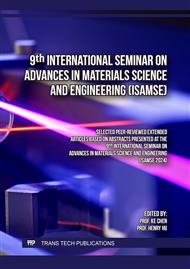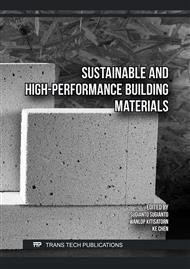[1]
Zhan Yulin, Lin Jinen, Sruzhe, et al. Fluidity and mechanical properties of basalt fiber cement mortar under different mixture ratios [J]. Journal of Tongji University (Natural Science Edition), 2023, 51(12):1804-1812.
Google Scholar
[2]
Xu Zikai. Study on the strength and shrinkage properties of slag-steel slag-based composite cementitious material [D]. Zhengzhou University, 2021.
Google Scholar
[3]
Zhou Ying. Experimental study on PVA/basalt fiber cement matrix composite properties [D]. Hubei University of Technology, 2021.
Google Scholar
[4]
In the ocean. Study on mechanical properties of polyvinyl alcohol-basalt fiber reinforced cement matrix composite [D]. Beijing University of Civil Engineering and Architecture, (2021)
Google Scholar
[5]
Shen Sizheng, Zhuang Jinping, Wang Hao, et al. High-temperature properties of the basalt- PVA fiber cement-based material [J/OL]. Journal of Harbin Engineering University, 1-9.
Google Scholar
[6]
Leng Rayageum, Zhang Pengfei, Liang Wenwen. Dynamic compressive mechanical behavior of basalt fiber-reinforced geological polymer concrete at high temperature [J]. Silicate notification, 2024,43(03): 914-921.
Google Scholar
[7]
Yu Heshe, Wang Yanan, Wang Jue, etc. Study on the effect of material component ratio on RPC mobility and compressive strength [J]. Highway, 2021, 66 (05): 285-288.
Google Scholar
[8]
Li Jianmin.Preparation and adsorption properties of fly ash-based porous geological polymer [D]. North China University of Science and Technology, 2021.
Google Scholar
[9]
Li W, Yi Y. Use of carbide slag from acetylene industry for activation of ground granulated blast-furnace slag [J].Construction and Building Materials, 2020, 238: 117-713.
DOI: 10.1016/j.conbuildmat.2019.117713
Google Scholar
[10]
Zhang Peng, Wang Han, Jiao Meiju, etc. nanometre SiO2 and PVA fiber [J]. New building materials, 2019, 46(12): 14-16.
Google Scholar
[11]
Wang Qingxuan. Resistance of basalt fiber and its composite material on the mechanical properties of concrete [D]. Dalian University of Technology, (2021)
Google Scholar
[12]
Bernal S A, Provis J L, Walkley B, et al. Gel nanostructure in alkali-activated binders based on slag and fly ash, and effects of accelerated carbonation [J]. Cement and Concrete Research, 2013, 53:127-144.
DOI: 10.1016/j.cemconres.2013.06.007
Google Scholar
[13]
Karima Bouguermouh et al. Effect of acid attack on microstructure and composition of metakaolin-based geopolymers: The role of alkaline activator [J]. Journal of Non-Crystalline Solids, 2017, 463: 128-137.
DOI: 10.1016/j.jnoncrysol.2017.03.011
Google Scholar



